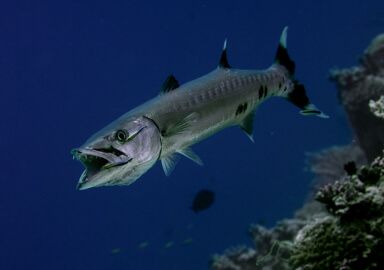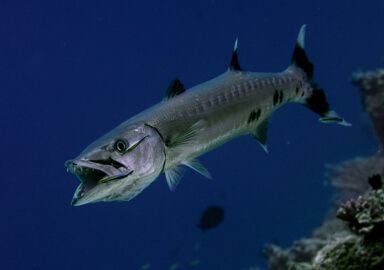Pacific Barracuda
Thin, long, and toothy, the Pacific barracuda is a popular target for sport fishing, with many anglers in southern California firmly “hooked” on this species.
View 4 listings
4
listings
–
price starting from
4
countries
–
to the nearest trip
Where and When?
California barracuda have a fairly limited distribution along the western seaboard of the USA from Washington State to Baja California. There are also other pockets such as around the Galapagos Islands. Outliers may wander as far north as Alaska in summer or as far south as Mexico in winter. While described as an “open water” species, California barracuda are usually found in coastal waters and frequent bays and even harbours. They normally dwell in the surface layers over deep water, but have been found at depths of up to 37 m. (121 ft.).
The Pacific barracuda are well known for homing in on diving birds or, conversely, driving baitfish to the surface where the birds feed on them. This species is highly migratory and often moves in large shoals along predictable routes and at known times. California barracuda feed throughout the year and, as long as they are present in a locality, they should be able to be caught.
About Pacific Barracuda
Pacific barracuda (Sphyraena argentea), also called Californian or silver barracuda, are longer and thinner than other barracuda. They have very pointed snouts with a large mouth full of sharp teeth. The upper body is usually blue or brownish, turning to shining silver on the underside. Females have a distinctive black rim on their pelvic fins while males have an orange or yellow fringe. The scales are typically very small, the dorsal fins are well separated and the tail fin in adults is deeply cleft.
Smaller than most barracudas, this species can attain about 1.2 m. (45 in.) and 6.8 kg. (15 lbs.) mass but most fish caught are considerably smaller than this. California barracuda have a reputation of being aggressive feeders, often joining in a “feeding frenzy” when a shoal of baitfish is located. They feed mostly on small fish, such as anchovies and sardines, but will also eat squid. While some fish are solitary, most seem to spend time in fairly large shoals. There is a general southwards movement, to warmer waters, as winter approaches and a return in spring.
How to Catch?
As a mostly inshore species, California barracuda are usually caught from small, day tripping, boats and also occasionally from the shore, pier or harbour. They do not grow particularly large and so medium tackle is usually adequate, but their many razor-sharp teeth require the use of strong, often metal, traces. The species may be caught on natural and artificial baits including on fly, but spinning, using solid metal jigs, is the most common method.
If you want to use natural dead or live bait, a useful method is simply to cast the bait out and let it drift in the current. Live bait can be hooked on the rear of the underside causing the fish to swim downwards. When spinning, it is often best to cast as far out as possible and retrieve fairly rapidly keeping the lure near the surface. If nothing happens then trying a deeper retrieve may work.
One of the most efficient and exciting ways to catch California barracuda is by searching for and zeroing in on, diving birds. Very often these barracuda will be darting around gulping in any possible food item before another fish reaches it. At these times, the aim is simply to cast your lure, fly, or bait into the flurry of feeding fish where it will probably be, immediately and dramatically, swallowed and the fight will be on.







